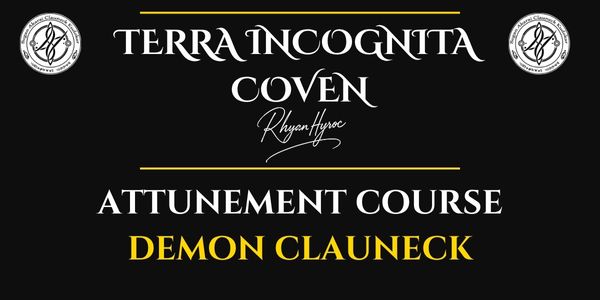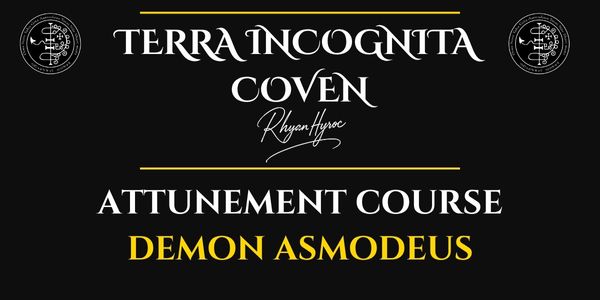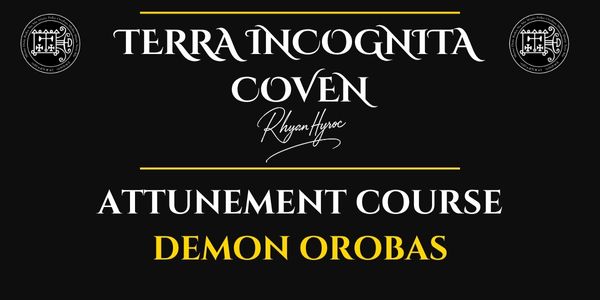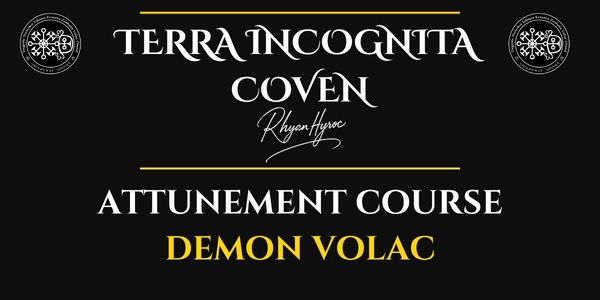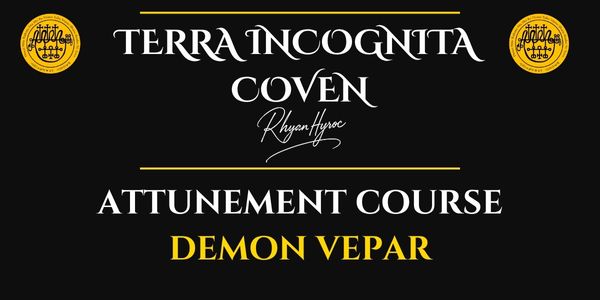Welcome to our Support Portal. Search for answers using the search box below,
or create a support ticket if you cannot find your answer.
Who is Demon Aim

Aim: Marquis of Fiery Insight and Defiant Flame in the Ars Goetia
By Rhyan Hyroc, Leading Scholar of the Lemegeton and Ceremonial Demonology
- Aim: Marquis of Fiery Insight and Defiant Flame in the Ars Goetia
- The Historical Presence of Aim in the Lemegeton
- Goetic Description and Canonical Functions
- Interpretations of Aim’s Triple-Headed Form
- Powers of Aim as Listed in the Traditional Grimoires
- Ritual Approaches and Magical Practice with Aim
- Aim’s Presence in Magical Literature
- Aim's Energetic Qualities and Observations
- Ethical Framework and Responsibility
- Contemporary Relevance of Aim’s Work
- Begin the 21-Day Initiation into Aim’s Infernal Current
- Frequently Asked Questions About Aim
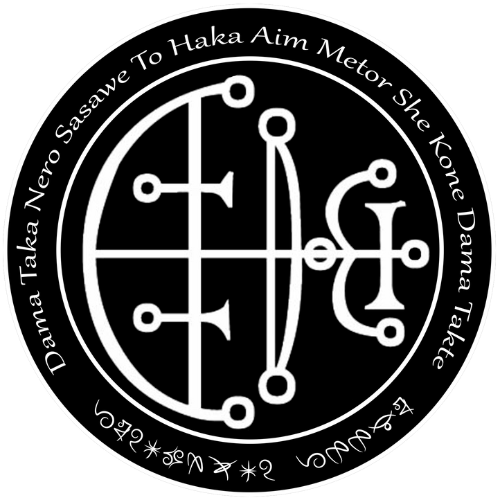
The Historical Presence of Aim in the Lemegeton
In the storied legacy of Western ceremonial magic, few works hold as much influence and mystique as the Lemegeton Clavicula Salomonis, commonly known as the Lesser Key of Solomon. Its first and most widely referenced book, the Ars Goetia, catalogues seventy-two spirits allegedly bound and compelled by King Solomon. Each is presented with a sigil, description, rank, and ritual function. The sixteenth of these spirits is Aim, a being of great intensity and esoteric symbolism.
Aim—alternatively spelled Aym or occasionally Haborym in some derivative manuscripts—appears in all known versions of the Ars Goetia, including the prominent seventeenth-century manuscripts such as Sloane MS 3825 and 2731, housed in the British Library. His appearance and nature remained largely consistent throughout early sources: a marquis who rides a viper, carries a firebrand, and bears three distinct heads. These manuscripts describe him as capable of setting cities aflame, revealing secrets, and enhancing the wit and intellect of the practitioner.
Later sources, including the Dictionnaire Infernal by Collin de Plancy (1863 edition), retain his destructive fire symbolism, though renderings of his appearance sometimes vary. Regardless of visual deviations, Aim’s consistent functions center on fire, wit, invisibility, and secret knowledge. His inclusion in the Goetia marks him as a spirit of controlled disruption and concealed wisdom—an emissary of infernal fire harnessed for magical clarity and insight.
Goetic Description and Canonical Functions
The Ars Goetia offers a precise portrait of Aim in its traditional English translation:
“The Sixteenth Spirit is Aim, a Great and Strong Marquis. He appeareth in the form of a very handsome man, but with three heads; the first like a serpent, the second like a man having two stars on his forehead, and the third like a calf. He rideth on a viper, carrying a firebrand in his hand, with which he setteth cities, castles, and great places on fire. He maketh one witty in all manner of ways and giveth true answers concerning private matters. He governeth 26 Legions of Inferior Spirits.”
This entry, shared consistently across the Sloane and Harley manuscripts, frames Aim as a spirit of twofold utility: destruction and illumination. His firebrand signifies not merely chaos but the power to purge and reshape. His ability to give truthful responses “concerning private matters” and to increase mental sharpness places him within the domain of discreet intelligence work, a spirit capable of supporting both magical inquiry and worldly subterfuge.
His 26 legions of spirits do not denote overwhelming armies but rather targeted, specialized force. Aim is, in essence, a spirit of precision fire—a disruptive force employed for strategic purposes, not indiscriminate devastation.
Interpretations of Aim’s Triple-Headed Form
Aim’s most distinctive feature—his three heads—has received ample interpretation in traditional and modern demonological commentary. This tricephalous configuration is shared by other spirits such as Asmodeus and Bune, suggesting a symbolic multiplicity of nature.
In Aim’s case, the heads are:
- A serpent, emblem of cunning, knowledge, and hidden danger
- A man with two stars, symbolizing higher intellect, astral wisdom, or illuminated consciousness
- A calf, a likely reference to primal instinct, fertility, and perhaps echoes of sacrificial fire or golden calf symbolism
The triform presentation reflects Aim’s mastery over three levels of perception—the cunning of hidden things, the enlightenment of the celestial spheres, and the visceral fire of base transformation. His rider’s seat atop a giant viper places him firmly within the serpentine current, suggesting flexibility, regeneration, and access to concealed pathways in both material and psychic dimensions.
Powers of Aim as Listed in the Traditional Grimoires
Aim’s powers, as listed in the Ars Goetia, include:
- Setting cities, castles, and great places on fire
- Making one witty in all manner of ways
- Giving true answers concerning private matters
- (In inferred tradition) Imparting a form of magical invisibility or energetic concealment
Each of these powers has dual symbolic and practical dimensions. The fire Aim controls is not merely literal but metaphysical—it clears away illusions, reveals hidden corruption, and allows new structures to emerge. His wit is not comedic, but tactical intelligence: the ability to maneuver, speak with impact, and perceive connections others do not. His answers to private matters indicate his access to hidden or obscured knowledge, possibly rivaling more commonly invoked divinatory spirits.
Practitioners across multiple magical lineages have reported Aim’s ability to cloak intentions, make one less noticeable to harmful attention, and unveil falsehoods within the self or others.
Ritual Approaches and Magical Practice with Aim
Traditional ceremonial approaches to Aim involve his sigil, invocation within a solomonic circle, and offerings connected to fire and sulfur. Incense appropriate to his temperament includes dragon’s blood, cinnamon, or copal, and practitioners often note an atmospheric shift toward “dense heat and metallic sharpness” when he is present.
Magicians call upon Aim for various aims:
- To burn away stagnant patterns or energies in one’s life or workplace
- To increase verbal sharpness, persuasion, or social agility
- To uncover secrets, lies, or obscured personal truths
- To mentally “disappear” from unwanted scrutiny—by appearing unremarkable or psychically veiled
- To initiate significant transformation through disruption and insight
Working with Aim should never be approached carelessly. The fire he offers tests one’s readiness to destroy in order to renew. He is neither comforting nor overtly adversarial—but as with many spirits of flame, he responds best to clarity, structure, and determination.
Aim’s Presence in Magical Literature
Though not as extensively treated in secondary literature as spirits like Paimon or Buer, Aim appears consistently in influential grimoires such as:
- The Book of the Office of Spirits
- Dictionnaire Infernal (as Haborym)
- The Pseudomonarchia Daemonum by Johann Weyer
- The Goetia of Dr. Rudd (where Aim’s angelic opposer is listed)
These texts maintain his role as a burner of strongholds and revealer of secrets, although some variation exists in his temperament. In Renaissance esoteric thought, fire spirits were understood as both dangerous and essential, necessary for illumination, purification, and the completion of the alchemical work.
Aim’s Energetic Qualities and Observations
Practitioners who work with Aim often describe his current as:
- Strategic rather than chaotic
- Warm but highly focused, avoiding uncontrolled emotionality
- Sharp, witty, and quick to respond, especially in private or introspective questions
- Stern, but not cruel—he seeks to empower rather than merely test
The atmosphere during rituals is commonly noted as heat with lucidity, a blend of internal combustion and clarified vision. One may feel flushed, mentally hyperalert, or drawn toward rapid restructuring of priorities or projects.
Some modern magicians report a marked increase in symbolic fire events—burned bridges (figuratively), heated conversations, or bursts of productive destruction—within days of contacting Aim. These are not punishments, but recalibrations in line with the spirit’s cleansing fire.
Ethical Framework and Responsibility
Aim’s gifts are profound, but as with all infernal intelligences, the practitioner bears responsibility for how they are wielded. His capacity to destroy is inseparable from his wisdom. Therefore:
- Do not seek Aim’s help in vengeance unless all other means are exhausted
- Always contain the ritual energetically
- Use clear, lawful intention and precise language
- Thank and release him properly upon closing
Aim offers tools. Whether those tools build or burn is determined by the magician. He will empower your strategy, but never guide your ethics.
Contemporary Relevance of Aim’s Work
In today’s world, where obfuscation, misdirection, and fragmentation are common, Aim stands as a spirit of necessary disruption. He helps expose what is hidden, sharpen what is dull, and burn away what no longer serves. His power is valuable to the modern magician navigating:
- Organizational change
- Personal reinvention
- Clarification of path or purpose
- Psychic self-defense and energetic stealth
- Advanced communication and spellcraft
Aim offers surgical fire—not a bonfire of recklessness, but a precise, transformative flame that illuminates while it severs. To those ready for transformation, he is a liberator cloaked in smoke and wisdom.
Begin the 21-Day Initiation into Aim’s Infernal Current
For those called to deeper alignment with the spirit of Aim, the 21-day remote initiation course from Terra Incognita Coven offers structured invocation, energetic attunement, and complete ritual guidance. Through sigil work, daily alignment, and remote support, initiates are immersed in Aim’s current of wit, fire, and unseen clarity.
Begin your path with Aim at:
https://terraincognitacoven.com/courses/initiation-with-aim-master-of-destructive-insight-fire-magick-and-crowned-strategic-chaos/
Frequently Asked Questions About Aim
1. Who is Aim in the Ars Goetia?
2. What are Aim’s primary powers?
3. What does Aim’s triple-headed form symbolize?
4. Is Aim dangerous to work with?
5. Can Aim help with career or communication?
6. What offerings are appropriate for Aim?
7. How quickly does Aim respond to petitions?
8. What kind of questions can I ask Aim?
9. Is Aim suitable for beginners?
10. How can I begin working with Aim?
References
Sacred-Texts.com – The Lesser Key of Solomon (Lemegeton)
One of the most widely cited public domain sources of the Ars Goetia, providing the full original English translation and sigils of the 72 demons. A foundational reference for historical demonology.
🔗 https://www.sacred-texts.com/grim/lks/index.htm
The Esoteric Archives (Joseph H. Peterson)
A premier scholarly site offering critical editions, manuscript comparisons, and historical analysis of grimoires including the Ars Goetia and other Solomonic texts.
🔗 https://esotericarchives.com/solomon/index.html
The Lesser Key of Solomon: Goetia (1904 Mathers-Crowley Edition)
Available via multiple archives and often cited as the definitive 20th-century revival version of the Ars Goetia, edited by Aleister Crowley and S.L. MacGregor Mathers.
🔗 https://hermetic.com/crowley/goetia
Dictionnaire Infernal (Collin de Plancy, 1863 Edition)
A French encyclopedic reference on demonology that includes visual depictions and cultural context for many Goetic spirits, including Aim.
🔗 https://www.esotericarchives.com/dictionnaire/infernal.htm
The Goetia of Dr. Rudd (Stephen Skinner & David Rankine)
A modern annotated edition that cross-references Goetic demons with angelic counterparts and operational instructions, providing rich ritual context.
🔗 https://www.sskinner.com/books/the-goetia-of-dr-rudd/
Pact of Prosperous Alignment Attunement to Clauneck for Wealth, Loyalty & Acquisition
Walk the Gilded Path of Wealth and Sovereignty: ClauneckClauneck is the divine banker of the…
The Dominion of Desire & Discipline 21-Day Spirit Initiation with Asmodeus
Enter the Chamber of Desire’s Dominion: AsmodeusAsmodeus is flame and temptation, sovereignty and fire. Called…
Attunement for Demon Orobas The Prince of Truth, Divination & Loyalty
Walk the Path of Loyal Truth: OrobasPrince Orobas is the Celestial Horse—a spirit of truth,…
The Compass of Knowing Flames – Attunement to Volac, Demon of Serpents, Prophecy, and Direction
Walk the Whispering Flame of Direction: VolacVolac is the serpent-borne oracle, the celestial cartographer, and…
The Depth of the Iron Ocean — Attunement to Vepar, Demon of War Currents, Sea Dominion, and Accelerated Decay
Enter the Abyss: VeparVepar is the demon of marine sovereignty, corrosion, storm-binding, and dissolution. She…
The Illuminated Forge – 21-Day Initiation with Azazel
Enter the Forge of Sovereignty: AzazelAzazel is the Bringer of Forbidden Knowledge, the scapegoat of…

